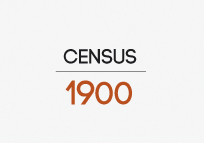




BELGIAN SOCIETY IN HISTORIC CENSUSES
Industrial census 1896
Source criticism
Those who leaf through the volumes that contain the industrial statistics from 1896 are struck by the enormous size of the census. The undertaking was an unparalleled operation and other censuses pale by comparison. In general, great value is placed on the results of the census. Various authors who critically examine censuses are positive about the results. Jean Gadisseur speaks of a "chef d'oeuvre" for its time (Gadisseur 1990). According to him, the margin of error when dividing the working population into branches was only 1% to 3% (compared to 10% to 15% in 1880). For Guido De Brabander this census is one of the rare sources that give a rather reliable image of the total size of Belgian industry (De Brabander 1984).
Different elements are advantageous to the census. By the end of the 19th century, the apparatus of government was better equipped to deal with difficult assignments, such as counting professions. The different levels of government had already worked together for decades on other surveys and inquiries when the census took place. The census agents were recruited from the growing number of people who were schooled, both in cities and in the countryside. Compared to previous censuses, the preparations in 1896 were more substantial. The guidelines given to census workers were more extensive and more precise. The census agents received a relatively high payment per completed census form, which was an incentive to count every person and every company. They also had a list of industrial professions that they could refer to when registering the professional activity. In an attempt to prevent evasion, it was announced that the census would not be used for fiscal purposes. Fines were foreseen for citizens who didn't cooperate or those who didn't cooperate sufficiently. The government only had to threaten to send commissioners to 15 municipalities before the requested forms were delivered. In addition, the central government exercised control over the completeness and reliability of the data that was gathered. The fact that one authority checked and processed the data was good for the uniformity of the census.
Despite this, the census also has limitations. While other industrial censuses took place at the same time as a population census, this was not the case in 1896. For the identification of the industrial population, one had to fall back on (less reliable) municipal registers. Officials were aware of the limitations of this source. Prior to the census, a random check was carried out in five districts, including Brussels and Liège. It showed that the registers offered sufficient footing for the intended objective if a few control mechanisms were built in.
The omission of certain industrial enterprises from the census lowers the value of the results. In spite of the aim of the census, state enterprises were kept out of the census. Even though it was repeatedly announced that the census results related to these enterprises would be published in a separate volume, there are no traces of such a book. We must mention that in 1896 the number of state enterprises was quite a bit lower than today (mainly railway, water and gas distribution). Institutions that produced for their own use or that didn't pay a wage to the makers of the goods were omitted from the census.
Departing from one specific census date meant that some industries were eliminated, namely the ceramics industry. Numerous brickyards were underrepresented in the census. A portion of the employees from this sector would have been working in other branches at the time of the census, including the sugar factories that were operating at full capacity in October.
Finally, we must point out the limitations of the classification scheme. The way that certain economic activities are fit into the scheme come across as strange today. Adding a "special industries" category and including the transport sector in an industrial census would not be done today. Some activities, like ironing and washing textiles, belong more at home in the tertiary sector. Overall, the classification of industries does satisfy the rules that are applied today. We must not forget that census agents in 1896 could not fall back on generally accepted divisions of economic activity such as NACE. In many cases, the reader can adjust the scheme by combining or deleting sections using these digital statistics. But caution is required because everything is not what it seems at first sight. Certain 'tertiary' activities, such as ironing and laundry ateliers, were truly part of the industrial production process in some municipalities because they were departments in industrial factories and industrial ateliers.